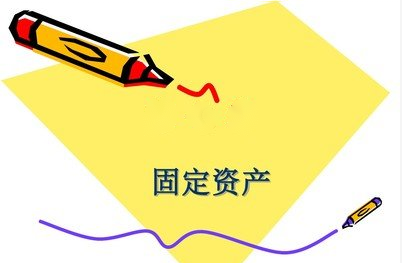
财报术语fixed asset -凯发唯一官网登录
fixed asset
固定资产
by will kenton
reviewed by julius mansa
updated jul 27, 2020
编写人:will kenton
审核人:julius mansa
于2020年7月27日更新
what is a fixed asset?
什么是固定资产?
a fixed asset is a long-term tangible piece of property or equipment that a firm owns and uses in its operations to generate income. fixed assets are not expected to be consumed or converted into cash within a year. fixed assets most commonly appear on the balance sheet as property, plant, and equipment (pp&e). they are also referred to as capital assets.
固定资产是指企业在经营过程中拥有并使用的能够在较长使用寿命内产生收入且具有实物形态的房屋或设备。固定资产预计在一年之内不能被耗用或变现。固定资产常作为房屋、厂房及设备(pp&e)列示在资产负债表中,也被称为“资本资产”。
key takeaways:
关键要点:
· fixed assets are items, such as property or equipment, a company plans to use over the long-term to help generate income.
· 固定资产指公司计划长期使用的有助于产生收入的房屋或设备等。
· fixed assets are most commonly referred to as property, plant, and equipment (pp&e).
· 固定资产常指房屋、厂房及设备(pp&e)。
· current assets, such as inventory, are expected to be converted to cash or used within a year.
· 存货等流动资产预计在一年之内能够变现或使用。
· noncurrent assets, in addition to fixed assets, include intangibles and long- term investments.
· 非流动资产(固定资产除外)包括无形资产和长期投资。
· fixed assets are subject to depreciation to account for the loss in value as the assets are used, whereas intangibles are amortized.
· 固定资产通过折旧以弥补固定资产的价值损耗,而无形资产则是通过摊销。
fixed asset
固定资产
how a fixed asset works
固定资产详解
a company's balance sheet statement includes its assets, liabilities, and shareholders' equity. assets are divided into current assets and noncurrent assets, the difference for which lies in their useful lives. current assets are typically liquid assets that will be converted into cash in less than a year. noncurrent assets refer to assets and property owned by a business that are not easily converted to cash. the different categories of noncurrent assets include fixed assets, intangible assets, long-term investments, and deferred charges.
公司的资产负债表包含该公司的资产、负债和股东权益。资产分为流动资产和非流动资产,二者的区别在于使用寿命不同。流动资产通常指一年内能够变现的资产。非流动资产是指企业拥有的无法轻易变现的资产。非流动资产包括固定资产、无形资产、长期投资和递延费用等项目。
a fixed asset is bought for production or supply of goods or services, rental to third parties, or use in an organization. the term “fixed” translates to the fact that these assets will not be used up or sold within the accounting year. a fixed asset typically has a physical form and is reported on the balance sheet as pp&e.
购入固定资产的目的是生产或提供货物或服务、出租给第三方或为企业所用。“固定的”是指这些资产在一个会计年度内不会被耗用或出售。固定资产通常具有实物形态,作为房屋、厂房及设备(pp&e)列示在资产负债表中。
when a company acquires or disposes of a fixed asset, this is recorded on the cash flow statement under the cash flow from investing activities. the purchase of fixed assets represents a cash outflow to the company while a sale is a cash inflow. if the asset's value falls below its net book value, the asset is subject to an impairment write-down. this means that its recorded value on the balance sheet is adjusted downward to reflect that it is overvalued compared to the market value.
公司对固定资产的收购或处置记录在现金流量表中投资性现金流项下。购入固定资产表示公司的现金流出,出售固定资产表示现金流入公司。如果固定资产价值低于其账面净值,则表明该固定资产减值。这意味着资产负债表所载价值有所下调,相较于市场价值,对该固定资产价值有了过高的估计。
when a fixed asset has reached the end of its useful life, it is usually disposed of by selling it for a salvage value, which is the asset's estimated value if it was broken down and sold in parts. in some cases, the asset may become obsolete and will, therefore, be disposed of without receiving any payment in return. either way, the fixed asset is written off the balance sheet as it is no longer in use by the company.
一旦固定资产的使用寿命结束,通常会以出售方式处置该固定资产以获得残值,即该固定资产拆分后分批出售的估值。在某些情况下,该固定资产可能会变为老旧资产,因此在处置时无法获得付款。无论哪种方式,该固定资产不再为公司所用,会从资产负债表中核销。
fixed assets vs. current assets
固定资产与流动资产
both current assets and fixed assets appear on the balance sheet, with current assets meant to be used or converted to cash in the short term (less than one year) and fixed assets meant to be used over the longer term (more than one year). current assets include cash and cash equivalents, accounts receivable, inventory, and prepaid expenses. fixed assets are depreciated, while current assets are not.
资产负债表包含流动资产和固定资产,流动资产指短期(一年内)可使用或变现的资产,固定资产指长期(一年以上)可使用的资产。流动资产包括现金和现金等价物、应收账款、存货和预付款项。固定资产可折旧,而流动资产却不能折旧。
fixed assets vs. noncurrent assets
固定资产与非流动资产
fixed assets are a noncurrent assets. other noncurrent assets include long-term investments and intangibles. intangible assets are fixed assets to be used over the long term, but they lack physical existence. examples of intangible assets include goodwill, 凯发唯一官网登录 copyrights, trademarks, and intellectual property. meanwhile, long-term investments can include bond investments that will not be sold or mature within a year.
固定资产属于非流动资产。非流动资产还包括长期投资和无形资产。无形资产是长期使用的固定资产,但不具有实物形态。其包括商誉、著作权、商标权和知识产权。同时,长期投资包括一年内无法出售或到期的债券投资。
benefits of fixed assets
固定资产的益处
information about a corporation's assets helps create accurate financial reporting, business valuations, and thorough financial analysis. investors and creditors use these reports to determine a company's financial health and decide whether to buy shares in or lend money to the business. because a company may use a range of accepted methods for recording, depreciating, and disposing of its assets, analysts need to study the notes on the corporation's financial statements to find out how the numbers were determined.
企业资产信息有助于编制精确的财务报表、进行企业评估和全面的财务分析。投资人和债权人通过这些报告可以确定公司的财务健康状况,决定是否购买该公司的股份或借款给该公司。鉴于公司可以采用一系列通用的方法记录、折旧和处置资产,分析人员需要研究该公司的财务报表附注,以找到确定财务报表所载数据的方法。
fixed assets are particularly important to capital-intensive industries, such as manufacturing, while require large investments in pp&e. when a business is reporting persistently negative net cash flows for the purchase of fixed assets, this could be a strong indicator that the firm is in growth or investment mode.
固定资产对制造业等资本密集型产业尤为重要,因为在房屋、厂房及设备(pp&e)方面需要需要较大投入。如果公司为购入固定资产而持续报告其净现金流为负,则可判断该公司正处在发展阶段或投资阶段。
examples of fixed assets
固定资产的示例
fixed assets can include buildings, computer equipment, software, furniture, land, machinery, and vehicles. for example, if a company sells produce, the delivery trucks it owns and uses are fixed assets. if a business creates a company parking lot, the parking lot is a fixed asset. note that a fixed asset does not necessarily have to be "fixed" in all senses of the word. some of these types of assets can be moved from one location to another, such as furniture and computer equipment.
固定资产包括建筑物、计算机设备、软件、设备、土地、机器和车辆。例如,如果公司出售产品,其拥有并使用的运货车属于固定资产。如果公司建造停车场,停车场也属于固定资产。请注意,从任何意义上说,固定资产不一定必须是“固定的”。某些固定资产可以从一个地方移动到另一个地方,如设备和计算机设备。
special considerations
注意事项
fixed assets lose value as they age. because they provide long-term income, these assets are expensed differently than other items. tangible assets are subject to periodic depreciation, and intangible assets are subject to amortization. a certain amount of an asset's cost is expensed annually. the asset's value decreases along with its depreciation amount on the company's balance sheet. the corporation can then match the asset's cost with its long-term value.
固定资产会随使用寿命而贬值。由于提供的是长期收入,固定资产的分摊方式与其他项目不同。有形资产定期折旧,无形资产摊销。每年分摊一定金额的固定资产成本费用。固定资产价值随公司资产负债表所载折旧额而递减。公司可以将固定资产成本与其长期价值一一对应。
how a business depreciates an asset can cause its book value—the asset value that appears on the balance sheet—to differ from the current market value at which the asset could sell. land cannot be depreciated unless it contains natural resources, in which case depletion would be recorded.
公司折旧固定资产会导致其账面价值(即资产负债表所载固定资产价值)与该固定资产出售时的现行市场价值不同。土地无法折旧,除非土地富含自然资源(在这种情况下,消耗情况将被记录)。
推荐阅读
